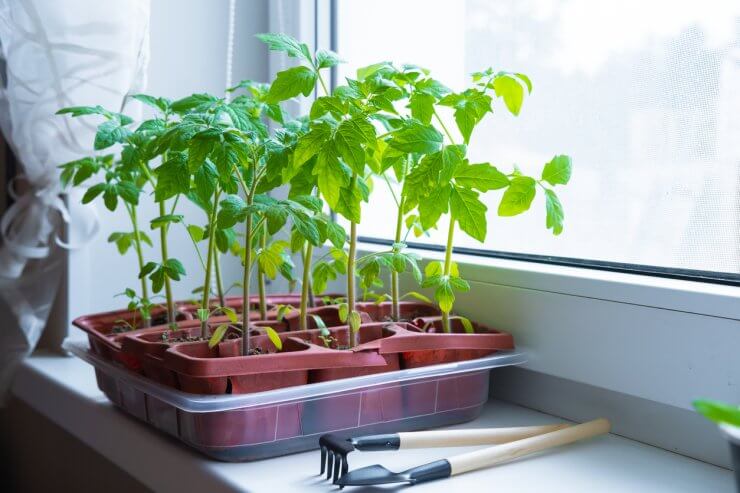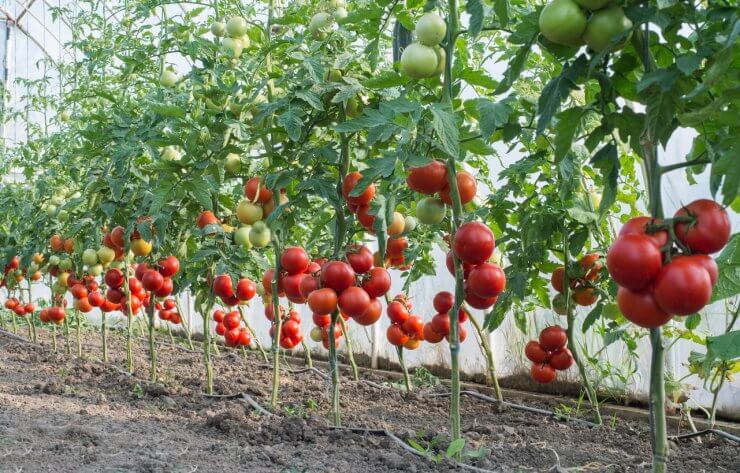I’ll admit it, I’ve been that person scrambling to the local farm stand in May, desperately seeking tomato transplants after my seedlings failed. Again. But after years of bringing home potentially diseased plants (and once, a horrifying infestation of spider mites), I finally committed to mastering the art and science of growing tomatoes from seed. Now, I’m here to share everything I’ve learned about timing, technique, and the fascinating biology behind growing robust tomato seedlings.

Understanding Timing: A Science-Based Approach to Starting Seeds
Growing tomatoes from seed is all about counting backwards from your last frost date. But here’s where many gardeners go wrong: they don’t account for tomato variety maturation times, which can vary dramatically. Let’s break this down by USDA zones and tomato types.
For determinate varieties like Roma or Bush Early Girl (which mature in 50-70 days), you’ll want to start seeds 6-8 weeks before your last frost date. But for those glorious indeterminate heirlooms like Brandywine or Cherokee Purple (which can take 80-100 days to mature), you’ll need to start even earlier – 8-10 weeks before the last frost.
In USDA zones 3-4, where the last frost might be in late May, you’re looking at starting seeds indoors in early March for indeterminates, and mid-March for determinates. In zones 5-6, aim for mid-March and late March respectively. Zones 7-8 can typically start in early February for indeterminates and late February for determinates.
For those in the warmer zones 9-10, you’re playing a different game altogether. Instead of worrying about frost, you’re planning around heat. In these zones, you actually have two main growing seasons: one in early spring and another in late summer for fall harvests. For spring planting in zones 9-10, start your seeds indoors in December or January. This allows you to get plants in the ground by February or March, giving them time to set fruit before the intense summer heat arrives. For your fall crop, start seeds indoors in July or August when it’s still blazing outside. These plants will be ready to go into the garden in September or October when temperatures begin to moderate, giving you fresh tomatoes well into winter.
Here’s a fascinating adaptation for zone 9-10 gardeners: look for heat-tolerant varieties like Solar Fire, Phoenix, or Sun Master. These varieties have been specifically bred to set fruit even when night temperatures remain above 75°F, thanks to modified genes that allow pollen to remain viable at higher temperatures.
What many gardeners don’t realize is that tomato seeds contain natural germination inhibitors – compounds that prevent premature sprouting. These inhibitors are gradually broken down by consistent moisture and optimal temperatures (70-75°F). This is why maintaining steady conditions is crucial for successful germination.

The Science of Strong Stems
Here’s where the biology gets fascinating: tomato seedlings develop what we call adventitious roots – those little bumps along the stem that can develop into roots. This is why we can plant tomatoes deep, unlike most other vegetables. But to develop strong stems worthy of deep planting, we need to understand what triggers stem strength.
The key lies in a plant hormone called thigmomorphogenesis – yes, that’s a real term! It’s the plant’s response to mechanical stress, like wind or gentle brushing, that triggers stronger cell wall development. This is why I run a small fan near my seedlings and gently brush the tops of the plants daily with a ruler or my hand.
For soil, I’ve found that a sterile seed-starting mix with a pH between 6.0-6.8 works best. Here’s the science behind this: tomato seeds need a light, well-draining medium that retains enough moisture for germination but prevents damping-off disease, a fungal problem that causes seedling collapse. I make my own mix using one part vermiculite, one part perlite, and two parts coco coir or peat moss. The vermiculite provides mineral content and water retention, while perlite ensures crucial aeration.
To prevent leggy seedlings (a common problem caused by insufficient light), you need to understand the role of photomorphogenesis – how plants develop in response to light. Tomato seedlings need 14-16 hours of strong light daily. Place your grow lights just 2-3 inches above the seedlings and adjust them upward as the plants grow. What’s happening here is fascinating: when light intensity is too low, plants produce excess auxin (another plant hormone), causing them to stretch toward the light source.
Temperature also plays a crucial role in preventing leggy growth. Many gardeners don’t realize that tomatoes grow best with a temperature differential – slightly cooler at night (60-65°F) than during the day (70-75°F). This temperature swing helps control growth rate and promotes stockier plants.
When your seedlings have developed their first true leaves (not the initial seed leaves, or cotyledons), start feeding them with a quarter-strength, balanced organic fertilizer. The phosphorus content is particularly important at this stage for root development.
Your seedlings are ready for transplanting outdoors when they’re about 6-8 inches tall, have a stem thickness similar to a pencil, and have developed their second or third set of true leaves. But before planting, they need to be hardened off – gradually exposed to outdoor conditions over 7-10 days. This process triggers the production of protective compounds in the plant tissues, making them more resilient to outdoor stresses.
Eager to grow the most flavorful tomatoes in your neighborhood this season? Our comprehensive Tomato Gardening Guide takes you beyond these seed-starting basics to cover everything from companion planting and pest control to pruning techniques and more. Whether you’re growing sprawling Brandywines or compact patio tomatoes, you’ll find practical tips backed by horticultural science. Check out the guide to transform your tomato growing game!
What’s your experience with growing tomatoes from seed? Have you discovered any unique techniques that work in your climate zone? Share your successes (and failures – we all have them!) in the comments below. As gardeners, we’re all constantly learning from each other, and I’d love to hear about your journey in mastering the art and science of growing tomatoes from seed.


 Previous
Previous

